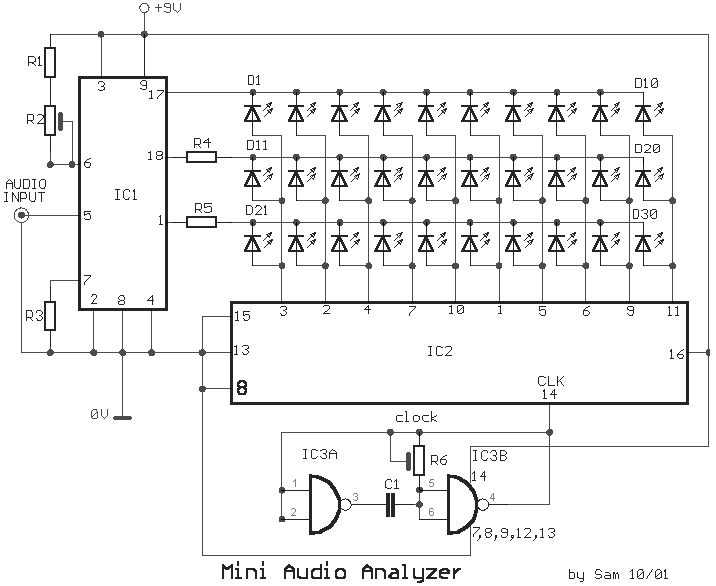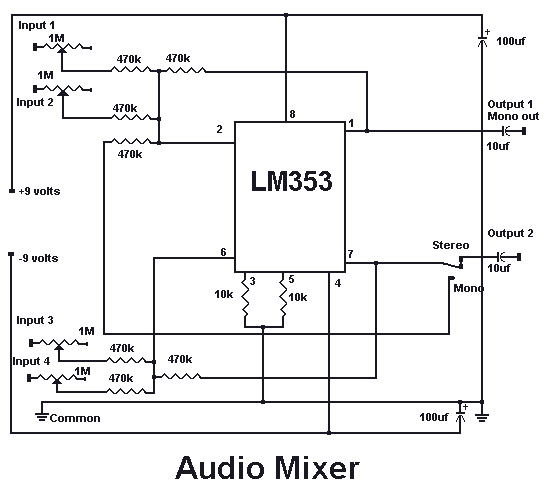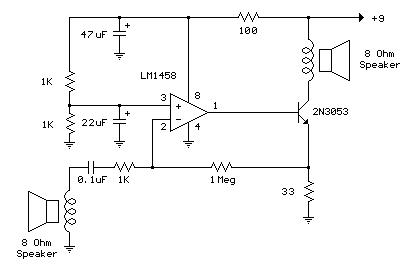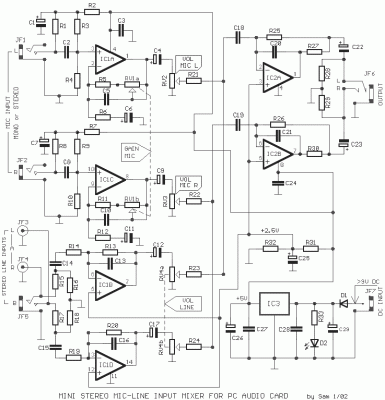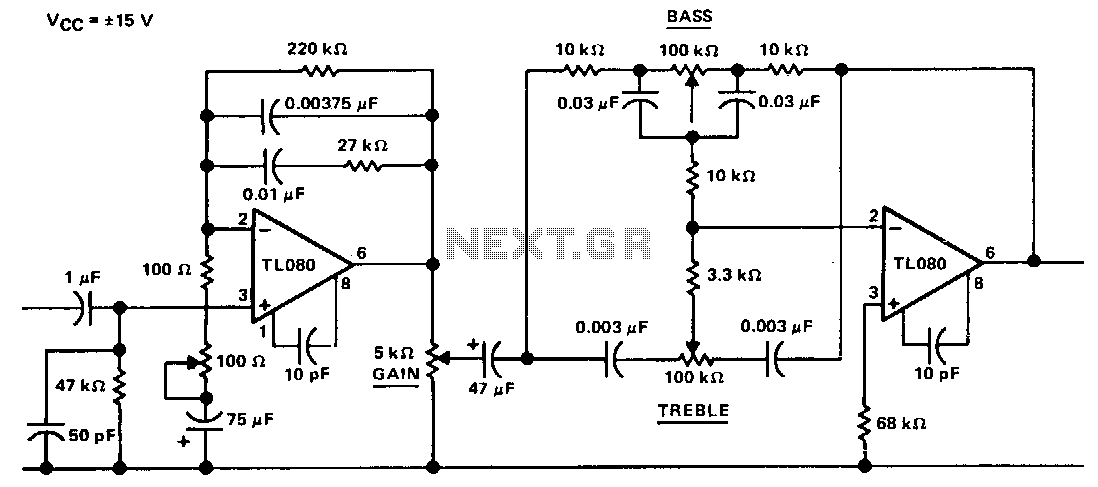
Audio Line preamp Driver
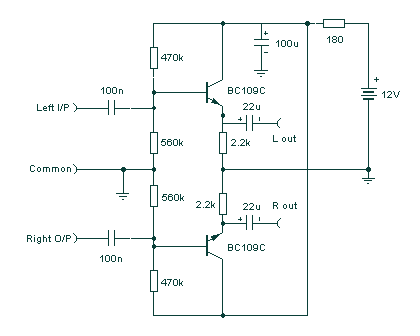
This preamplifier has a low output impedance, and is designed to drive long cables, allowing you to listen to a remote music source without having to buy expensive screened cables. The very low output impedance of around 16 ohms at 1KHz, makes it possible to use ordinary bell wire, loudspeaker or alarm cable for connection. The preamplifier must be placed near the remote music source, for example a CD player. The cable is then run to a remote location where you want to listen. The output of this preamp has a gain of slightly less than one, so an external amplifier must be used.
This preamplifier circuit is engineered to provide a robust solution for audio signal transmission over long distances. Its low output impedance, approximately 16 ohms at 1 kHz, is a critical design feature that minimizes signal loss and allows the use of standard wiring materials such as bell wire, loudspeaker wire, or alarm cable. The design ensures that high-quality audio signals can be transmitted without the need for costly shielded cables, making it a cost-effective solution for audio enthusiasts and installers alike.
The placement of the preamplifier is strategic; it should be situated close to the audio source, such as a CD player, to mitigate the effects of noise and interference that can occur over long cable runs. By connecting the preamplifier directly to the source, the signal can be amplified before it travels through the cable, preserving audio fidelity.
The gain of the preamplifier is slightly less than one, indicating that it is designed to buffer the signal rather than amplify it significantly. This characteristic is advantageous when interfacing with an external amplifier, which will provide the necessary power to drive speakers. The output stage of the preamplifier is configured to ensure compatibility with a wide range of amplifiers, facilitating seamless integration into various audio systems.
For optimal performance, the circuit may include additional components such as capacitors for filtering and resistors to set the gain and output impedance. Proper power supply decoupling is also essential to ensure stable operation and minimize noise. Overall, this preamplifier circuit is a practical choice for extending audio connections while maintaining high-quality sound reproduction.This preamplifier has a low output impedance, and is designed to drive long cables, allowing you to listen to a remote music source without having to buy expensive screened cables. The very low output impedance of around 16 ohms at 1KHz, makes it possible to use ordinary bell wire,loudspeaker or alarm cable for connection.
The preamplifier must be placed near the remote music source, for example a CD player. The cable is then run to a remote location where you want to listen. The output of this preamp has a gain of slightly less than one, so an external amplifier must be us 🔗 External reference
This preamplifier circuit is engineered to provide a robust solution for audio signal transmission over long distances. Its low output impedance, approximately 16 ohms at 1 kHz, is a critical design feature that minimizes signal loss and allows the use of standard wiring materials such as bell wire, loudspeaker wire, or alarm cable. The design ensures that high-quality audio signals can be transmitted without the need for costly shielded cables, making it a cost-effective solution for audio enthusiasts and installers alike.
The placement of the preamplifier is strategic; it should be situated close to the audio source, such as a CD player, to mitigate the effects of noise and interference that can occur over long cable runs. By connecting the preamplifier directly to the source, the signal can be amplified before it travels through the cable, preserving audio fidelity.
The gain of the preamplifier is slightly less than one, indicating that it is designed to buffer the signal rather than amplify it significantly. This characteristic is advantageous when interfacing with an external amplifier, which will provide the necessary power to drive speakers. The output stage of the preamplifier is configured to ensure compatibility with a wide range of amplifiers, facilitating seamless integration into various audio systems.
For optimal performance, the circuit may include additional components such as capacitors for filtering and resistors to set the gain and output impedance. Proper power supply decoupling is also essential to ensure stable operation and minimize noise. Overall, this preamplifier circuit is a practical choice for extending audio connections while maintaining high-quality sound reproduction.This preamplifier has a low output impedance, and is designed to drive long cables, allowing you to listen to a remote music source without having to buy expensive screened cables. The very low output impedance of around 16 ohms at 1KHz, makes it possible to use ordinary bell wire,loudspeaker or alarm cable for connection.
The preamplifier must be placed near the remote music source, for example a CD player. The cable is then run to a remote location where you want to listen. The output of this preamp has a gain of slightly less than one, so an external amplifier must be us 🔗 External reference
